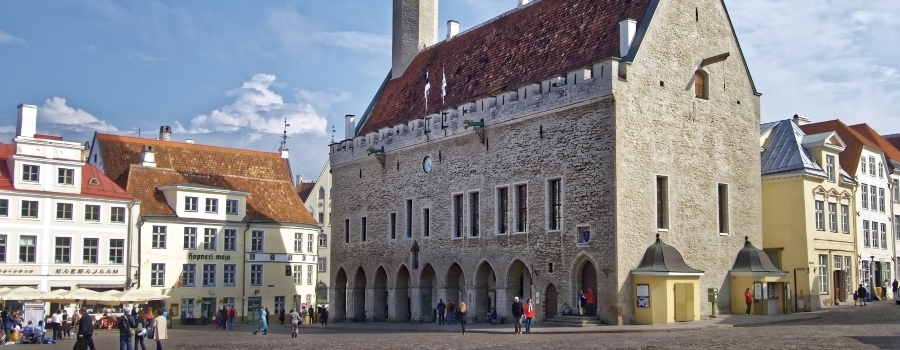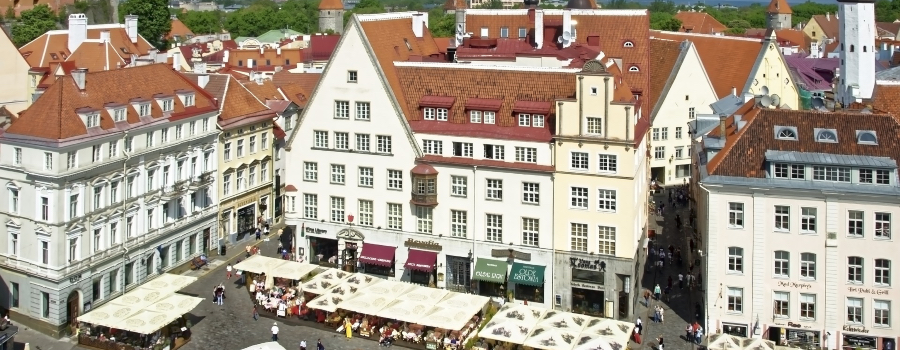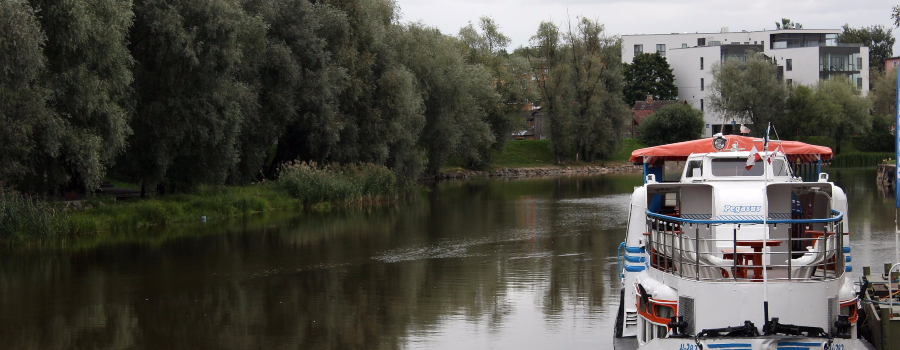Manage my booking
THE TRAVEL BLOG OF BALTIC TOURS

Best Places to Visit in Estonia
Estonia is one of the most popular travel destinations for many Europeans, especially from neighboring countries such as Lithuania or Latvia. Every year, it becomes increasingly popular to spend New Year's Eve in Tallinn or visit the Tartu ski resort. The country is comparatively cheap and easily reachable, and weather conditions are not so harsh. In this article, we have compiled the best places to visit in Estonia, whether you are traveling solo, with family, seeking extreme activities, or just a plate of local food.
If You Are Traveling to Estonia in Autumn
Don't be afraid of having to spend your vacation inside. There are plenty of places to go, and here are just a few of the best places to visit in Estonia in autumn! National park Lahemaa, 70 km east from Tallinn, preserves ancient manor houses (mõisa in Estonian). Now, these estates host hotels and museums. One such hotel is Vihula Manor, where you can stay overnight. Spend a few days here, enjoying the peace and beauty of nature and walking in the picturesque park. A morning walk will charge you with energy for the whole day. Palmse, once owned by the barons of von Palen, is a real museum with a recreated setting of the last century, its own greenhouse, and a French park. Explore the dressing room with costumes from the last century, sewn these days, allowing guests to try on hats and numerous dresses. Visit the garage near the manor house, showcasing a solid collection of bicycles, motorcycles, and cars.
Viljandi is a charming town, sunlit and dazzling with flowers, seemingly improbable and idyllic, like a place from the canvas of a romantic painter.
Island Saaremaa, or "SPAremaa," due to the abundance of SPA resorts, is famous for grey seals that surround the island. Seal-watching tours are usually organized from Papissaare harbor. The "furry fish" often come close to the boat to check out the guests. Waterproof clothes and a camera are recommended to capture these amazing creatures.
Palmse, once owned by the barons of von Palen, is a real museum with a recreated setting of the last century, its own greenhouse, and a French park. Explore the dressing room with costumes from the last century, sewn these days, allowing guests to try on hats and numerous dresses. Visit the garage near the manor house, showcasing a solid collection of bicycles, motorcycles, and cars.
Viljandi is a charming town, sunlit and dazzling with flowers, seemingly improbable and idyllic, like a place from the canvas of a romantic painter.
Island Saaremaa, or "SPAremaa," due to the abundance of SPA resorts, is famous for grey seals that surround the island. Seal-watching tours are usually organized from Papissaare harbor. The "furry fish" often come close to the boat to check out the guests. Waterproof clothes and a camera are recommended to capture these amazing creatures.
If You Prefer to Have a Family Vacation
Here are some good places to visit in Estonia when traveling with children and family: Vudila Mängumaa, Kaiavere village, located in the Vooremaa nature reserve, includes various outdoor game attractions like swings, slides, obstacle courses, trampolines, electric cars, ATV, water park, rowing boats, catamarans, game rooms, picnic areas, animal families, horseback riding, and more.Tallinn is Obviously One of the Must-Visit Cities in Estonia
Best places to visit in Tallinn include: Lennusadam (or the port of sea ships) is a fantastic place where real hydroplanes are stored and reconstructed in huge concrete hangars. Here, you can learn all about Estonian shipbuilding, ships, and military gadgets used in the fleet. There is even a submarine from the 1930s that you can enter and explore from the inside. Outside the museum, near the pier, there are a lot of real ships. Another place that I would definitely recommend for my guests is KUMU (Valge, 1). It is not only the largest art museum in Tallinn but also a cultural center that hosts music, cinematographic, or art events. If you are wondering which place in Tallinn is the best for meeting the sunrise, it is the observation deck Patkuli, located on top of the hill Toompea in the Old Town. Since Estonia is very close to the North Pole, in the summer, the sun rises very early in Tallinn. Therefore, it is logical to go there immediately after a fun night.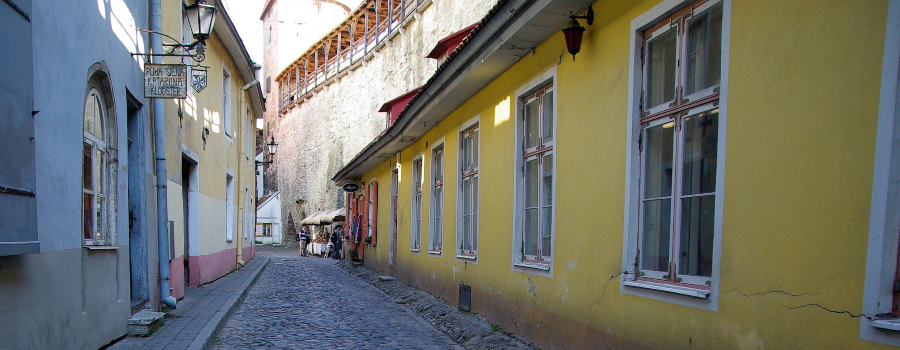
Photographer's Paradise
If you are a photographer working for "National Geographic" or you just admire the calm atmosphere of untouched woods, cloudy clay cliffs, or dangerously attractive marshlands, here are 10 best places to visit in Estonia if you are a professional or beginner photographer and want to capture the most outstanding views. And once again, the most amazing island in the world, Saaremaa, is the largest island in Estonia. You can get there by ferry from the village of Virtsu. The nature of Saaremaa is beautiful, and it boasts completely untouched corners of civilization, offering silence, peace, and tranquility. At the same time, the city of Kuressaare (the capital of the island) boasts an excellent tourism infrastructure. You should definitely visit the island of Saaremaa if you want to learn more about Estonian culture and enjoy the beauty of untouched nature. The Falling House is an interesting landmark of Tartu, an Estonian "Tower of Pisa." It is one of the most unique places to go to in Estonia. With a slight tilt on its side, the building resembles the famous architectural monument in Italy. The unusual "Falling House" is located on Tartu Town Hall Square, in the historic center of the city. You can reach it by bus, and the nearest stop is "Raeplats." The sculptural composition "Kissing Students" has become one of the symbols of the city of Tartu. Bronze-molded figures of young people merged in a passionate kiss are installed in the fountain located on Town Hall Square. The authors of the monument accurately reflected the spirit and youth of the city, recognized as the student capital of Estonia. It is one of the famous places to visit in Estonia.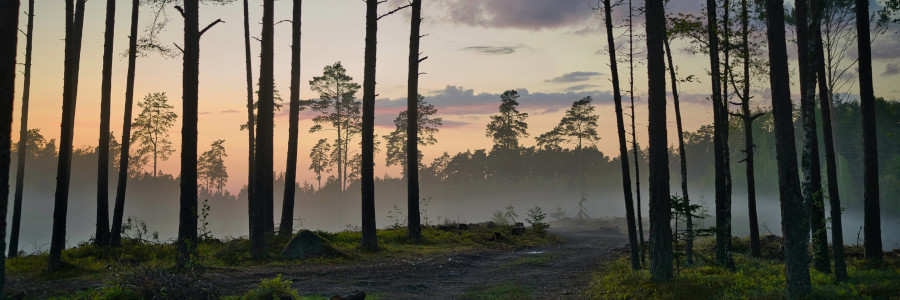 In the South of Estonia, there are Big and Small Taevaskoda natural trails with Väike-Taevaskoda sandstone, Ahja river, the Emelyate Cave, the Maiden's Cave, and the highest outcrop of the Suur-Taevaskoda sandstone at 22.5 meters height.
Island Hiiumaa, located to the north of Saaremaa, is the second-largest island in Estonia and one of the most picturesque places.
Emumägi Hill, the highest point of Northern Estonia, features an observation tower, Emumemm treehouse, the House of the Sunrise, an old cemetery, a campsite, and picnic areas.
Blue Springs of Saula is one of the most amazing places. There are three large springs with crystal clear water, where even the sandy bottom is visible in detail. It is believed that the Siniallikad water cures diseases if you throw a silver coin, jewelry, or beads into the springs.
The Männikjärve hiking trail offers beautiful views of Männikjärve and the surrounding marshlands.
The Ontika limestone cliff, the highest cliff in Estonia at 55 m above sea level, is located in Kohtla in the northeast of Estonia. It looks like a stone book, revealing layers of different eras. There is also the Valaste waterfall and a unique glint forest, worth visiting.
In Saaremaa island, there is Panga village and an amazing place to visit - the Panga cliff, with an ancient altar remaining from old pagan times here.
In the South of Estonia, there are Big and Small Taevaskoda natural trails with Väike-Taevaskoda sandstone, Ahja river, the Emelyate Cave, the Maiden's Cave, and the highest outcrop of the Suur-Taevaskoda sandstone at 22.5 meters height.
Island Hiiumaa, located to the north of Saaremaa, is the second-largest island in Estonia and one of the most picturesque places.
Emumägi Hill, the highest point of Northern Estonia, features an observation tower, Emumemm treehouse, the House of the Sunrise, an old cemetery, a campsite, and picnic areas.
Blue Springs of Saula is one of the most amazing places. There are three large springs with crystal clear water, where even the sandy bottom is visible in detail. It is believed that the Siniallikad water cures diseases if you throw a silver coin, jewelry, or beads into the springs.
The Männikjärve hiking trail offers beautiful views of Männikjärve and the surrounding marshlands.
The Ontika limestone cliff, the highest cliff in Estonia at 55 m above sea level, is located in Kohtla in the northeast of Estonia. It looks like a stone book, revealing layers of different eras. There is also the Valaste waterfall and a unique glint forest, worth visiting.
In Saaremaa island, there is Panga village and an amazing place to visit - the Panga cliff, with an ancient altar remaining from old pagan times here.

Best Places to Visit in North Estonia
Northern Estonia is a crossroad, full of beauty and contrasts, where different cultures meet: seas and forests, industrial and rural, Lutheranism and Orthodoxy. Here, you can see the domes of the Orthodox Church and the stormy Lutheran spire, wander along the rocky shore, and get acquainted with the life of the fishing village of Altja. An Orthodox monastery operating in a quiet place Kuremäe for over a hundred years is a place of pilgrimage for believers from many countries and delights tourists with the measured calmness of their lives. The most important sights of Estonia are ancient castles. Currently, every Estonian castle is an architectural value, and many of them have museums and expositions with historical values. Here are 10 places to visit in Estonia if you like castles, dungeons, and old abandoned cemeteries. Maasilinna Castle of Saaremaa is located in the village of Maasi, on the coast. Varbola, an old fortress in Raplamaa, located just 54 kilometers from Tallinn, is a kind of open-air museum for which no entrance fee is charged. Haapsalu Castle, built in the XIII century and preserved to this day in good condition, brought the legend of the White Lady. Her ghost appears only at night in August, looking out of a single window. Paide is another ruined medieval castle, which, however, was restored to the dungeon. Now inside the castle, there is a cafe, and you can find some sculptures around the castle.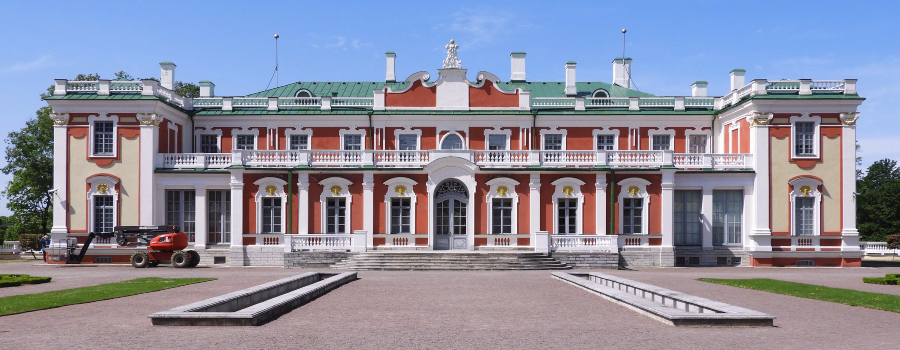
Top Places for the Best Local Food and Beverages
Visit Restaurant Farm on Müürivahe, 27b street in Tallinn, to try traditional Estonian dishes made from local ingredients. Rost Bakery on Rottermani Street in Tallinn offers traditional Estonian pastries. F-hoone Restaurant in the creative town Telliskivi is an extremely convenient place with friendly prices. JUUR Restaurant in Tallinn showcases organic Estonian ingredients, northern bracing flavors, and culinary brilliance. Rannahotell's restaurant and summer terrace of the hotel are favorites in Pärnu, offering classic favorites since its opening in 1937. Põhjaka is a cozy restaurant in the countryside serving comfort food made from the best Estonian ingredients. Hõlm is a restaurant ranked among the best in the Baltic and Nordic region according to gastronomical guides. If you find yourself in Tartu, don't forget to visit Vilde Health Cafe (Vallikraavi 4). This cafe is well-known among locals, who call it "an island of calm." Edelweiss is a warm and cozy restaurant in the center of Pärnu.Top Places to See in Estonia in Summer
Despite its size, Estonia always surprises with an abundance of sights and natural objects. If you are tired of the hustle and bustle of the city, you can go to the contemplation of local beauties. Toomemägi Hill in Tartu: During the summer months, walking through city parks or visiting the observatory is recommended. You can climb the central city hill of Toomemägi, the heart of Old Tartu and the place of the oldest settlement where Estonians settled more than 4,000 years ago.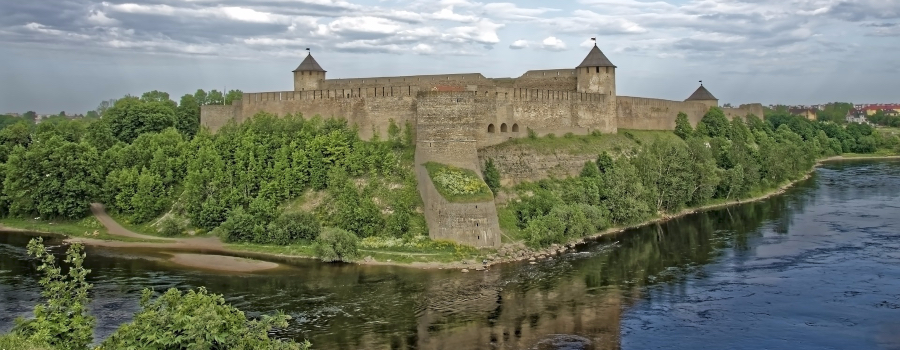 Captains Village in Käsmu: Käsmu, known as the "Village of Captains," was once a school of seamen. Today, it is a popular summer holiday destination with various events.
Kakerdaya Marsh Trail: Kakerdaja Bog is one of the largest bogs in Kõrvemaa. The picturesque bog features many lakes and is a stopping point for waterfowl in spring and autumn.
Onion Path: The Onion Path unites three cultures and the history of different people, forming the unique culture of Fad. Interesting attractions along the path include Alatskivi Castle, the museum of writer Juhan Liiva, the village Nina, and the sandstone outcrop in Kallaste.
Haan Hill: Haanja Nature Park, located in the center of Võrumaa on the Haanja Upland, offers beautiful scenery with the highest point in the entire Baltic, Suur Munamyagi, and the deepest lake in Estonia, Rõuge Suurjärv.
Kuressaare Castle: The episcopal fortress in Kuressaare, also known as the Kuressaare Castle, was built in the 14th century and currently houses the Saaremaa Museum.
Ristna Beach: One of the most beautiful beaches in Estonia, located on the island of Hiiumaa on the top of the Kõpu Peninsula. Ideal waves for surfing are formed here with a westerly wind.
Captains Village in Käsmu: Käsmu, known as the "Village of Captains," was once a school of seamen. Today, it is a popular summer holiday destination with various events.
Kakerdaya Marsh Trail: Kakerdaja Bog is one of the largest bogs in Kõrvemaa. The picturesque bog features many lakes and is a stopping point for waterfowl in spring and autumn.
Onion Path: The Onion Path unites three cultures and the history of different people, forming the unique culture of Fad. Interesting attractions along the path include Alatskivi Castle, the museum of writer Juhan Liiva, the village Nina, and the sandstone outcrop in Kallaste.
Haan Hill: Haanja Nature Park, located in the center of Võrumaa on the Haanja Upland, offers beautiful scenery with the highest point in the entire Baltic, Suur Munamyagi, and the deepest lake in Estonia, Rõuge Suurjärv.
Kuressaare Castle: The episcopal fortress in Kuressaare, also known as the Kuressaare Castle, was built in the 14th century and currently houses the Saaremaa Museum.
Ristna Beach: One of the most beautiful beaches in Estonia, located on the island of Hiiumaa on the top of the Kõpu Peninsula. Ideal waves for surfing are formed here with a westerly wind.
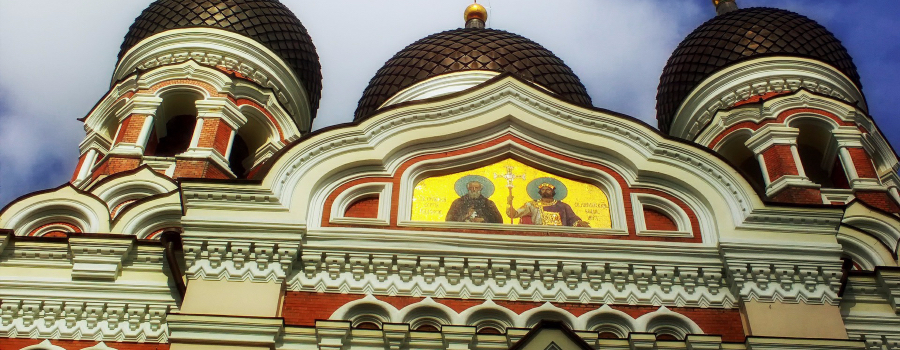
Where to Go in Estonia in April
Haapsalu: Haapsalu, the main resort of the country, is surrounded on three sides by the sea, earning it the nickname 'Venice of the North.' It is loved for its cozy atmosphere, warm water, curative mud baths, and friendly inhabitants. On the seashore, stands Kurzal, one of the most beautiful wooden buildings in all of Estonia. Matsalu: Matsalu, which includes the bay of the same name and the area around the Kasari river delta, along with its surrounding floodplains, coastal meadows, reed beds, and forests, is a national park recognized as a nature reserve. Covering more than 450 km² of land and sea, the park is inhabited by various species of fish, mammals, and vascular plants. Explore the unique landscape on foot, by bicycle, or by boat. For bird watching, there are seven observation towers, with the most popular located in Haesk, Keemu, and Kloostri.Places to Go in Estonia If You Are a Budget Tourist
The Transition of St. Katharina is one of the most beautiful and attractive places in the Old Town. Ancient slabs adorn the walls of the alley, and the pavement has remained untouched since the Middle Ages. At the end of the street, from the middle of the 17th century, there is the Masters’ Yard – a nice place with a bunch of shops and workshops where artisans work: glassmakers, mosaic houses, carpenters, sculptors, potters, furriers. The Dome Cathedral is one of the oldest Lutheran churches in Europe; construction began in the 13th century. The white-stone cathedral is situated in Vyshgorod (part of the Old Town), and the entrance to the temple is free of charge. In addition to ancient frescoes and tombstones, you can see the grave of Ivan Fedorovich Kruzenshtern. On Saturdays, free concerts of organ music are held in the Dome Cathedral. Anyone can enter the Town Hall pharmacy on the main square for free and look at the ancient methods of treatment: dried frogs, embalmed hedgehogs and worms, potions in dusty flasks, nests of swallows, powder from bats.
A visit to the Marzipan Museum Room on Pikk Street, 16 is also free of charge. Here you can watch the process of making marzipan figures and taste some sweets for free.
The Dome Cathedral is one of the oldest Lutheran churches in Europe; construction began in the 13th century. The white-stone cathedral is situated in Vyshgorod (part of the Old Town), and the entrance to the temple is free of charge. In addition to ancient frescoes and tombstones, you can see the grave of Ivan Fedorovich Kruzenshtern. On Saturdays, free concerts of organ music are held in the Dome Cathedral. Anyone can enter the Town Hall pharmacy on the main square for free and look at the ancient methods of treatment: dried frogs, embalmed hedgehogs and worms, potions in dusty flasks, nests of swallows, powder from bats.
A visit to the Marzipan Museum Room on Pikk Street, 16 is also free of charge. Here you can watch the process of making marzipan figures and taste some sweets for free.
Where to Go in Estonia at Night
Tartu, where the fifth of the total population consists of students. Therefore, this small town lives a lively life, and it cannot be called sleepy even at night, as I discovered during an informative night walk. Once a year, on the eve of May 1, the mayor of the city gives up his authority to students for one night. Many traditions and customs are connected with this night. For example, a real champagne wash with a statue of Baron von Baer is arranged, after which a tie bought in advance is put on him.Where to Go to in South Estonia
Lake Peipsi is Europe’s fifth-largest lake, and it has its own unique water and ice conditions, currents, and storms. In 1242, the Russians under Alexander Nevsky defeated the Teutonic Knights on frozen Lake Peipus. A common sight in South Estonia is onion fields. You will notice many onions grown, gathered, and sold in local villages. Kolkja Kala is an interesting place to familiarize yourself with the culture and cuisine of the Old Believers, which is based on fish from the local lake and onions grown in local beds. Simple and tasty. Recommended. Tartu food and wine festival, which takes place in the main town hall every year. Here you can try different edible souvenirs, such as goat cheese with raisins, canapé with famous Estonian sprat, carrot cake, and carpaccio with onion jam.Best Places to Visit in Estonia in Winter
Tallinn, which looks like a fairy-tale illustration at any time of the year, becomes completely magical in winter. The streets lit by lights converge at the large Christmas market on the Town Hall Square. Here, in the pavilion houses, you can buy adorable items and traditional products, eat sweets, admire ice sculptures, and children can visit the real Santa Claus and share their dreams. Otepää: The small town of Otepää is a great place for sports recreation. Situated on the hills of Southern Estonia, Otepää has become the most famous winter sports center in the Baltics.
Kadriorg: For this palace, one of Estonia's symbols, locals need to thank Peter I and his romantic mood. A year after Peter occupied Tallinn during the Northern War, he traveled here with Catherine. The Russian emperor himself called the complex in German “Yekaterinental,” that is, “Catherine Valley.” But the locals began calling it Kadriorg.
Despite Pärnu being considered the summer capital of Estonia, you can have a good time at this largest resort in winter, especially for those who want to enjoy peace and quietness among the romantic wooden architecture without tourist crowds or those who do not mind wandering along the deserted beach of the Baltic Sea.
As you can see, there are many great places to visit in Estonia!
Otepää: The small town of Otepää is a great place for sports recreation. Situated on the hills of Southern Estonia, Otepää has become the most famous winter sports center in the Baltics.
Kadriorg: For this palace, one of Estonia's symbols, locals need to thank Peter I and his romantic mood. A year after Peter occupied Tallinn during the Northern War, he traveled here with Catherine. The Russian emperor himself called the complex in German “Yekaterinental,” that is, “Catherine Valley.” But the locals began calling it Kadriorg.
Despite Pärnu being considered the summer capital of Estonia, you can have a good time at this largest resort in winter, especially for those who want to enjoy peace and quietness among the romantic wooden architecture without tourist crowds or those who do not mind wandering along the deserted beach of the Baltic Sea.
As you can see, there are many great places to visit in Estonia!


Professionally educated and highly experienced in tourism management, Rasa is passionate about encouraging guests to explore the Northeastern region of Europe in the most attractive way. She has been working in the tourism industry since 2000, assisting customers from 64 countries, and she loves doing it!
